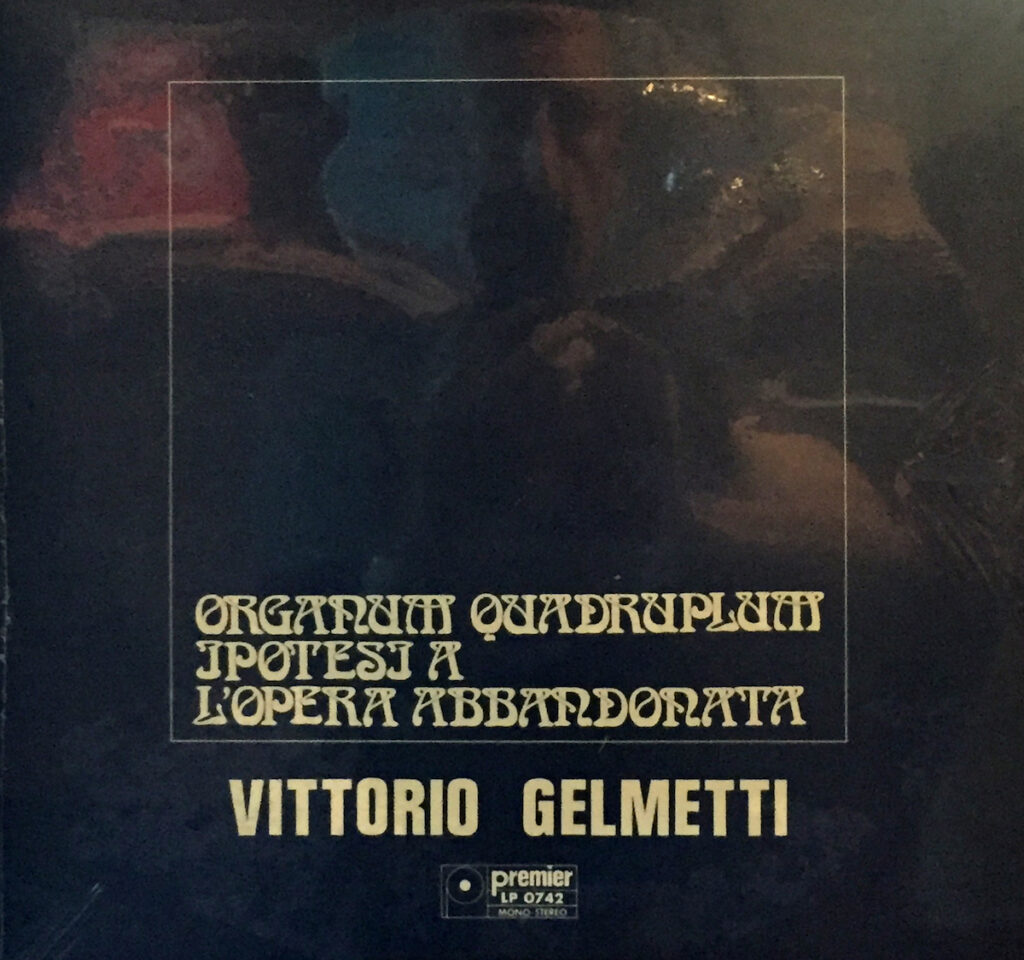Resident archivist Jack Dangers revisits a 1975 album by Italian composer Vittoria Gelmetti

Vittorio Gelmetti was born in Milan in 1926. He wrote music for films, including the vampire movie ‘La Llamada Del Vampiro’ in 1972. The album we’re looking at this month is untitled but contains three pieces, ‘Organum Quadruplum’, ‘Ipotesi A’ and ‘L’Opera Abbandonata’. The full title of the first piece is actually ’Organum Quadraplum “Questo È Il Gatto Con Gli Stivali”’
I’m not sure what ‘Organum Qudraplum’ means, although I think an organ is involved. The second part translates as “This Is The Cat With Boots”, and the performance credits list a choir, the Coro Del Centro Americano Studenti E Artisti, an organist and a guitar player. It’s a long piece, made in 1967, starting with a constant organ drone, long notes held by the choir and sudden explosions of noise.
‘Ipotesi A’, which I think means “Hypothesis A”, was recorded in 1974. It’s percussion, prepared piano and one of those bird call pipes that you fill with water. It’s all performed by Gelmetti, he’s credited with nightingale call, piano and percussion. It’s pretty wild. You can almost see him playing them all at the same time, one-man band style.
The B-side is my favourite. ‘L’Opera Abbandonata Tace E Volge La Cavità Verso L’Esterno’ is a 23-minute piece which Google Translate tells me is ‘The Abandoned Work Is Silent And Turns The Cavity Towards The Outside’. It’s constructed from found sound, shortwave radio going through filters.
I’m a sucker for shortwave radio, so whenever I hear a bit of that being treated, I’m hooked. Bursts of radio fade in and out with loads of fascinating electronic noise. At one point, a jaunty orchestral version of ‘The Young Ones’ by Cliff Richard fades in before it gets swamped by voices and static. There’s long sections of high-pitched radio noises, interference and drones. It’s like he’s using the dial of a shortwave radio as an instrument, editing on the fly.
It was recorded at Studio Eksperymentalne Polskiego Radia, the experimental electronic music studio in Warsaw in 1969, with Polish composer Bohdan Mazurek engineering. The sleevenotes say it has three levels, an electronic structure that underpins the whole piece, a collage structure (the radio broadcasts), and “quotes” from Beethoven, Stravisnsky and Wagner’s famous Tristan chord, which is upbeat, hopeful, down and dark at the same time.
Gelmetti died in 1992, in his late 60s. I picked up this copy on eBay, and it’s sealed and in mint condition. I think the seller must have found a box of unopened stock, because there’s a handful on Discogs, are all sealed and mint, which is very unusual for a record that’s nearly 50 years old.





